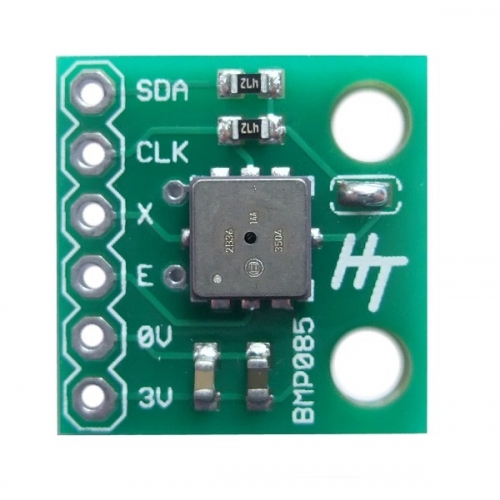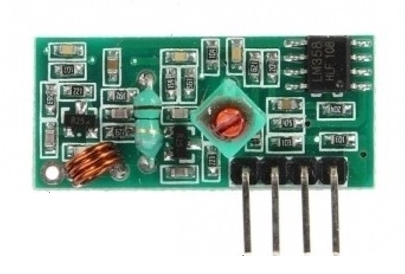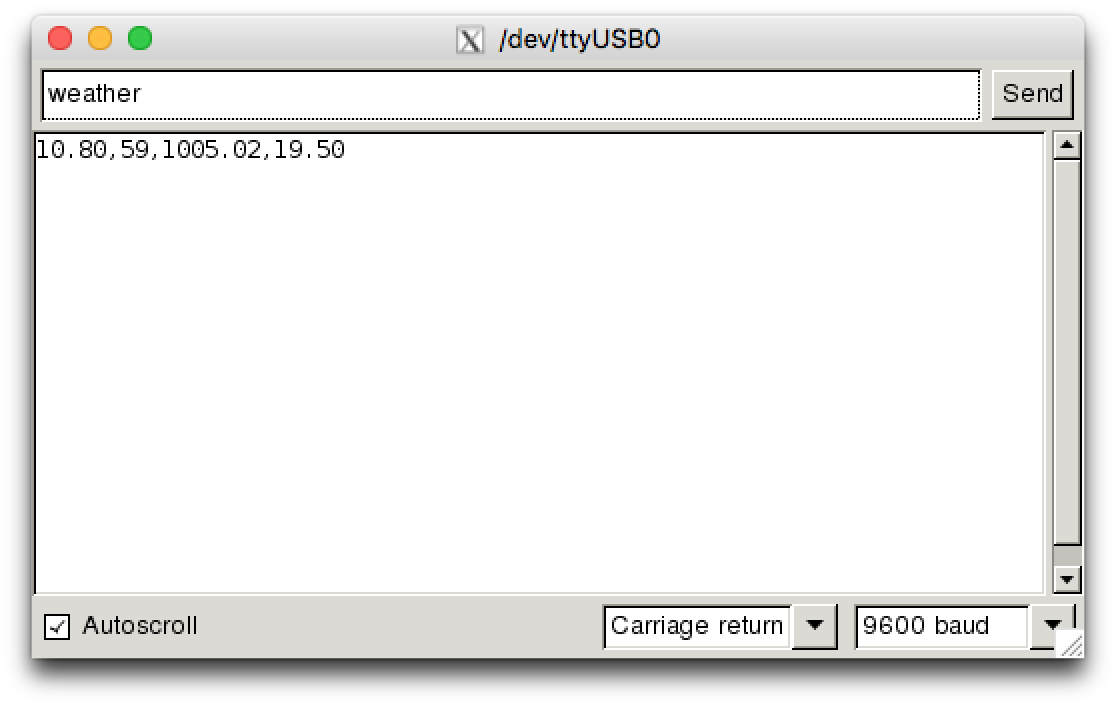This is a fun "geek" project and this page describes how it works. There are several components to it:-
- Outdoor temperature and humidity sensor
- Barometric pressure sensor (Bosch BMP085)
- 433MHz radio receiver
- Arduino Nano
- Prometheus time-series database
- Public webserver
Outdoor temperature and humidity sensor

This is the simplest piece. It was an eBay purchase. It contains a temperature sensor and a relative humidity sensor and a 433MHz radio-transmitter. Periodically, it wakes up and transmits its readings to be picked up by the indoor unit.
Barometric pressure sensor

This is a digital barometric pressure sensor. It is the digital equivalent of the old barometer that you might have had hanging in your hall in years gone by. Its far less stylish, but it is much more accurate and an awful lot smaller (about 3cm2) !
Actually, the particular pressure sensor that I'm using here - a Bosch BMP085 - is now obsolete: it has been superceded by the BMP180. However, I had a BMP085 in my parts-bin so that's what found its way into this project.
433MHz radio receiver

This receives the signal from the outdoor unit described above. It was another eBay purchase (cost almost nothing). There is nothing fancy about this radio: all of the "cleverness" is in the Arduino code which decodes the signal from this radio and turns it back into a data stream. I can't claim any credit for this: the heavy lifting was done by Luc Small.
Arduino Nano

The Arduino Nano does a few jobs:-
- Receives and decodes the signals from the outdoor unit
- Talks to the BMP085 pressure sensor
- Talks to the Linux server running Prometheus, which logs the data to a round-robin database
It is really acting as a bridge between the server and the sensors. When the server needs to know what the current weather readings are, it sends the command "weather" to the Arduino over a serial connection, and the Arduino responds with four values: the current temperature, relative humidity, atmospheric pressure and indoor temperature (which isn't used). You can see it working here:-

Prometheus Database
This is a small PC running Linux and the Prometheus database.
Prometheus is a Time-Series Database (TSDB), a specialised type of database designed and optimised to record quantities that vary over time. When Prometueus decides it needs to record a sample, it runs a Python script which connects to the Arduino, sends the "weather" command mentioned above and harvests the returned data.
Public Webserver
The server sits under my desk and isn't accessible to the outside world (I hope !). The page is hosted on a cloud-based Internet webserver. The web server can query the Prometheus database via a secure tunnel when a visitor reaches the page. It also does some local caching to improve performance when the page becomes wildly popular ☺
The Prototype
At the moment, it lives on a breadboard. This is what it looks like:-

The black wire heading off into the top-left corner is the connection to the Linux server and the white wire heading off the top of the picture is the radio antenna (cut to a suitable length for 433MHz radio reception).